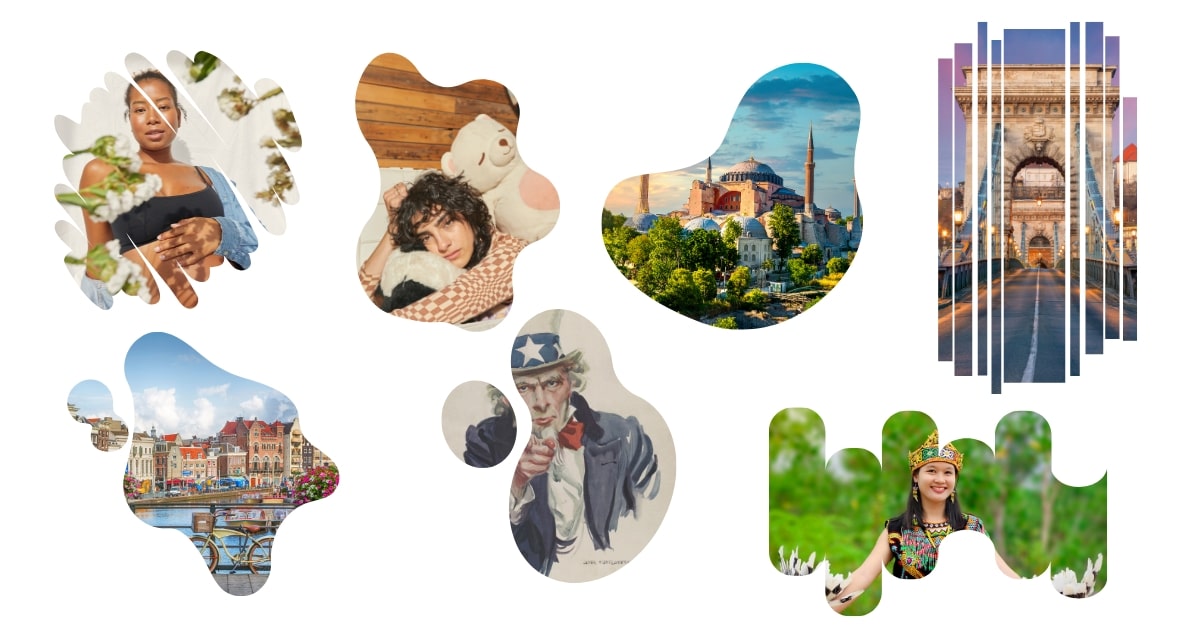Photo masking is a powerful image editing technique that allows you to create stunning visual effects and make precise edits to your images. It involves concealing or revealing specific parts of an image, giving you full control over its transparency. In this article, we’ll explore various photo masking examples to showcase the incredible versatility and creative possibilities this technique offers.
Introduction to Photo Masking
Photo masking is a technique used in image editing that involves creating a mask to hide or reveal certain areas of an image. This mask can be a simple shape, a complex outline, or even a gradient, allowing for a wide range of visual effects and edits. Photo masking is commonly used in graphic design, photography, and digital art.
Common Types of Photo Masking
There are several types of photo masking techniques, each serving a unique purpose:
- Layer Masking: Concealing or revealing parts of an image within a layer using brushes or gradients.
- Clipping Masking: Creating a mask based on a shape or object to isolate and control the visibility of an image.
- Alpha Masking: Using grayscale images to define transparency, with lighter areas being opaque and darker areas being transparent.
- Transparency Masking: Using color images to define transparency, allowing for intricate and detailed transparency effects.
- Channel Masking: Utilizing individual color channels (e.g., Red, Green, Blue) to create masks, especially for specific color adjustments.
- Complex Masking: Combining multiple masking methods for intricate subjects like hair or fur.
Photo Masking Examples
Now, let’s explore some inspiring photo masking examples:
Example 1: Product Photography
In e-commerce, clean and eye-catching product images are crucial. Photo masking can be used to remove the background and create a transparent product image that seamlessly integrates into websites and catalogs.
Example 2: Portraits and Photo Retouching
Photo masking is used to retouch portraits, allowing for precise adjustments to specific areas like skin, eyes, and hair. This technique ensures that the edits look natural and unnoticeable.
Example 3: Creative Compositions
Designers often use photo masking to create artistic compositions. By blending multiple images or elements with varying levels of transparency, they achieve unique and visually striking effects.
Example 4: Image Textures and Overlays
Photo masking can be used to apply textures and overlays to images, enhancing their visual appeal. This technique is popular in digital art and creative design projects.
Example 5: Web Design Elements
In web design, photo masking can be employed to create stylish shapes and elements that add depth and sophistication to websites. It’s especially useful for creating call-to-action buttons and banners.
Benefits of Using Photo Masking
There are several advantages to using photo masking in your image editing and design projects:
- Precision: Photo masking allows for precise control over which parts of an image are visible and which are concealed.
- Non-Destructive Editing: It’s a non-destructive editing technique, meaning you can always revert to the original image.
- Complex Compositions: Photo masking enables the creation of intricate and complex design compositions with ease.
- Natural Transitions: It helps create smooth and natural transitions between subjects and backgrounds, enhancing realism.
- Professional Results: Photo masking can elevate the quality of your images and designs, making them look polished and professional.
Conclusion
Photo masking is a versatile and creative technique that offers endless possibilities for image editing and design. Whether you’re retouching portraits, creating captivating product photos, or adding artistic elements to your designs, photo masking can elevate the quality and visual appeal of your images. By exploring these examples and understanding the benefits of photo masking, you can harness its power to achieve impressive and professional results in your creative projects.
FAQs
Can I use photo masking with any image editing software?
Yes, most image editing software, including Adobe Photoshop, GIMP, and many online editors, offer photo masking capabilities.
Is photo masking reversible after it’s applied?
Yes, photo masking is a non-destructive technique, so you can always adjust or remove the mask.
Are there any limitations to photo masking?
Photo masking is most effective when applied to high-quality images and may have limitations with low-resolution or heavily compressed images.
How can I learn more about photo masking and improve my skills?
There are numerous online tutorials and courses that can help you master photo masking techniques and enhance your skills.
Is photo masking suitable for all types of images?
Photo masking can be applied to various types of images, but its suitability depends on the specific project and the desired visual effect.
This page was last edited on 22 February 2024, at 12:05 pm
